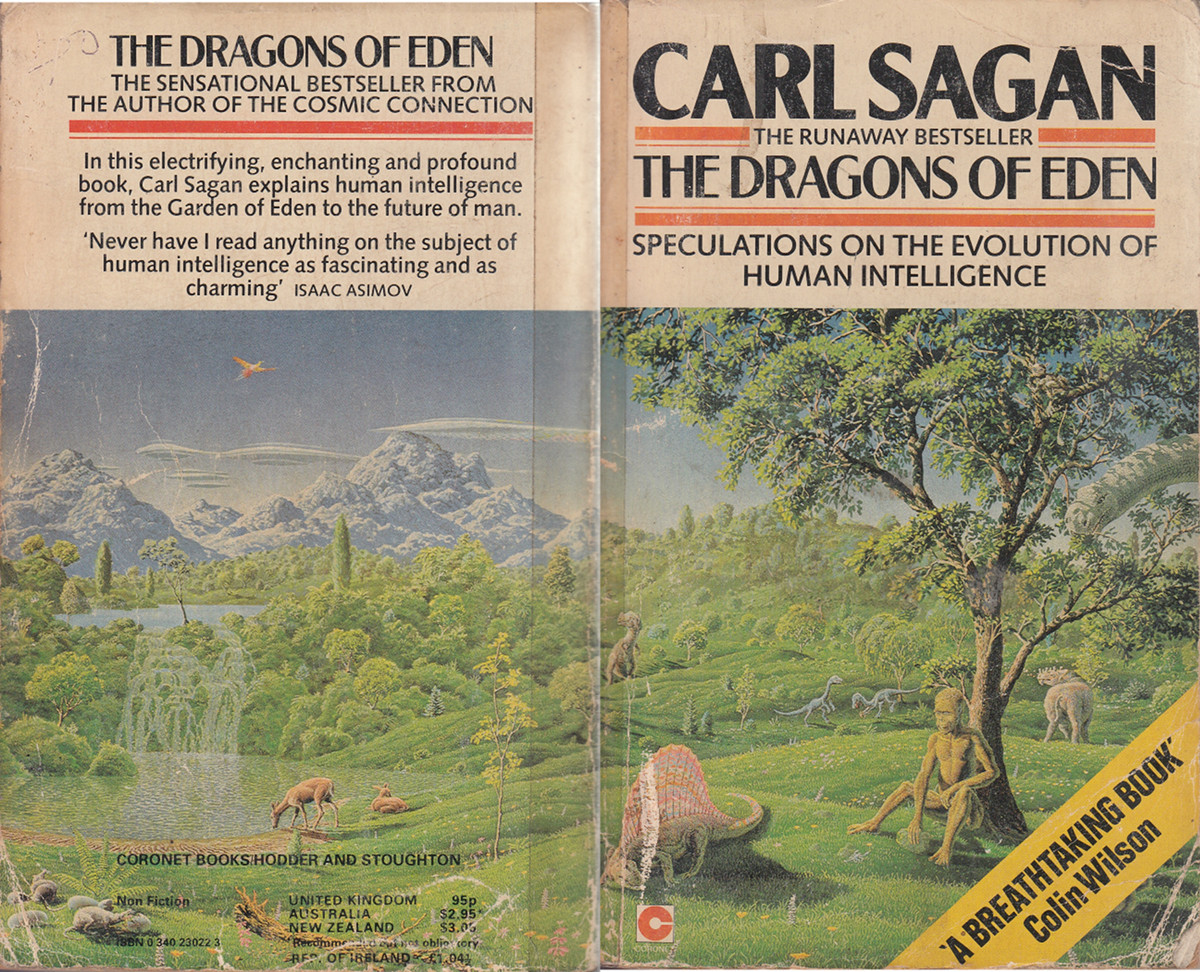
I recently finished I Am A Strange Loop by Douglas Hofstadter. The book is an introduction to the core ideas about self, self-reference, feedback loops and consciousness as an emergent phenomena. The core question that is considered is
What do we mean when we say I?
Hofstadter in the preface indicates his angst at many people missing out on the core ideas of Gödel, Escher, Bach: An Eternal Golden Braid. No doubt GEB is hard to read, and each one makes their own meaning of it.
Years went by, and I came out with other books that alluded to and added to that core message, but still there didn’t seem to be much understanding out there of what I had really been trying to say in GEB. xiii
I Am A Strange Loop is sort of a prequel to GEB, which came afterwards. In the book the focus is on developing an idea of emergent self, in which our consciousness is seen to emerge from feedback that we have by interacting with the world. Hofstadter uses a variety of examples to drive home the point of recursive feedback loops, giving rise to strange phenomena. The central claim is that we, our sense of self, our idea of consciousness derives from recursive interactions and feedback that we get via our senses.
He starts with a dialogue he wrote as a teenager between Plato and Socrates about what is it to be alive and being conscious, this in a way sets the stage for things to come. In the first chapter On the Souls and Their Sizes we are made to think about presence of souls in different foods that we eat (he himself doesn’t partake mammalian meat). We non-chalantly eat a tomato, irritatingly squish a mosquito, but what happens when we eat higher life forms, like chicken, pigs and sheep? Do they have souls? Do all living beings have souls? If so, then does the soul of a human is greater than that of a cow (now here I must be careful, there are people in my country who judge the soul of a cow much much greater than that of a human being), of a pig, of a chicken, of a mosquito of a tomato?
Does a baby lamb have a soul that matters, or is the taste of lamb chops just too delicious to worry one’s head over that? 18
The suggestive answer is given in a conciousness cone, in which we normal adult humans are at the top and atoms are the start of the cone. But then granted that we have a soul, are we born with a fully developed one? Here Hofstadter takes a developmental approach to the concept of the soul. The idea is that we are born with some essence of what appears to be soul, then gradually over the years it develops. The concept of soul here is used interchageably with “I”. The main take home point in this chapter is whatever this is, we do not get the fully developed version of it from birth. Rather it is a developmental process which takes place in the real world, shaped by experiences. The said developmental changes are in degree, rather than a black/white switch.
In the second chapter This Teethering Bulb of Dread and Dream we look at possible ways of studying the mechanisms of the brain which might potentially shed some light on the puzzle that we are after. In general the idea of studying the hardware of the brain seems to be set in agenda of many neurologists. But Hofstadter argues against this way of studying thinking.
Saying that studying the brain is limited to the study of physical entities such as these would be like saying that literary criticism must focus on paper and bookbinding, ink and its chemistry, page sizes and margin widths, typefaces and paragraph lengths, and so forth. 26
Another analogy given is that of the heart. Just like heart is a pumping machine, brain is a thinking machine. If we only think heart as an aggregate of cells, we miss out on the bigger picture of what the cells do. The heart surgeons don’t think about heart cells but look at the larger structure. Similarly to study thinking the lower level of components may not be the correct level to study highly abstract phenomena such as concepts, analogies, consciousness, empathy etc. This is pointing towards thinking as an emergent phenomena, emerging from the interactions at lower levels which are composed of objects/entities which are not capable of thinking.
Hofstadter then takes philosopher John Searle to task for his views regarding impossibility of thinking arising from non-thinking entities. The analogy of a beer can to a neuron is taken apart. What is suggested by Searle in his thought experiments is equivalent to memory residing in a single neuron. But this certainly is not the case. We have to think of the brain as a multi-level system. But going too deep in these levels we would not get a comprehensible understanding of our thinking.
Was it some molecules inside my brain that made me reshelve it? Or was it some ideas in my brain? 31
Rather it is ideas that make more ideas.
Ideas cause ideas and help evolve new ideas. They interact with each other and with other mental forces in the same brain, in neighboring brains, and, thanks to global communication, in far distant, foreign brains. And they also interact with the external surroundings to producein toto a burstwise advance in evolution that is far beyond anything to hit the evolutionary scene yet, including the emergence of the living cell. Sperry as quoted on 31-32
Another analogy that is given is that of Thermodynamics and Statistical Mehcanics. Just as atoms interact in a gas at a micro-level to create gas laws which can be observed at a macro-level. The macro-level laws also makes it comprehensible to us, because of the sheer amount of information at mirco level that one would have to analyse to make sense. (Provided that we can in theory solve such a massive set of equations, not considering the quantum mechanical laws.) Similarly the point is made that for understanding a complex organ such as the brain, which contains billions of interacting neurons, we should not look at the hardware at the lowest level, but rather look for macro-level patterns.
Statistical mentalics can be bypassed by talking at the level of thinkodynamics. 34
The perception of the world that we get is from sensory inputs, language and culture. And it is at that level we operate, we do not seek atomic level explanations for the dropping of the atomic bomb. This simplification is part of our everyday explanation, and we choose the levels of description depending on the answers that we are seeking.
Drastic simplification is what allows us to reduce situations to their bare bones, to discover abstract essences, to put our fingers on what matters, to understand phenomena at amazingly high levels, to survive reliably in this world, and to formulate literature, art, music, and science. 35
The third chapter The Causal Potency of Patterns provides us with concrete metaphors to think about emergent phenomena and thinking at levels. The first of such metaphors is a chain of dominoes, which can be thought of as a computer program for carrying out a given computation. In this case finding checking if a number is prime: 641. Now a person watching the domino fall right upto 641 can presumably give two answers, the first one is that the domino before 641 did not fall, while other is 641 is a prime number. These two answers are many levels apart. The second example is of Hofstadter sitting a traffic jam, The reason why you are stuck in traffic, is because the car in front of you is not moving. On the other hand this does not tell you anything about why the jam arose in the first place, which may be due to a large number of cars going home after a game or a natural disaster of some kind. The main idea is that we can have two (many?) levels of explanation each one looking at the system from a different level of detail, for example, the car ahead of you local, the reasons for the jam global. As far as the causal analysis goes we can look at answers at different levels.
Deep understanding of causality sometimes requires the understanding of very large patterns and their abstract relationships and interactions, not just the understanding of microscopic objects interacting in microscopic time intervals. 41
Similar example is that of a combustion engine. The designers of the engine do not think about molecular level of interactions, the level that is relevant for them is the thermodynamic level of pressure, temeperature and volume. The properties of individual molecules like their locations, velocities is irrelevant in such a description, though the properties of the ensemble is.
This idea — that the bottom level, though 100 percentresponsible for what is happening, is nonetheless irrelevant to what happens — sounds almost paradoxical, and yet it is an everyday truism. 42
Another example that is given is of listening to music. Lets say you hear a piece of music, and you experience some emotions due to it. Now, consider there was a slight delay before playing started, the actual molecules which vibrated to get you the music, would be different than in the first case. Yet, you would experience the music in the same way even though the molecules that brought you that music were completely different.
The lower-level laws of their collisions played a role only in that they gave rise to predictable high-level events. But the positions, speeds, directions, even the chemical identity of the molecules – all of this was changeable, and the high-level events would have been the same. 42
Thus we can say that a lower level might be responsible for a higher level event and at the same time is irrelevant to the higher level.
The next metaphor we consider is that of careenium and simmbalism. (No points for guessing what the intended puns are here!) There are many witty puns throughout the book, and Hofstadter uses them very effectively to make his points. This Gedankenexperiment is referred to many times in the book. Simms (small interacting marbles) are very small marbles, which can crash into each other and bounce off the walls in a frictionless world. They are also magnetic so that if they hit each other with low velocity they can “stick” to each other and form clusters called simmballs. A simmball can be composed of millions of simms, and may loose or gain simms at its boundary. Thus we have tiny and agile simms, and huge and nearly immobile simmballs. All this bashing and boucing happens at frictionless pooltable, the careenium.
After setting this metaphorical system we add another complexiety that external events can affect the simmballs, thus we can have a record of history by reading the configurations of simmballs. Now a reductionist approach to this system would be that we really need to know only about nature of interaction of the simms, rest are just epi-phenomena, which can be explained by behavior of the simms. But such a view isnot helpful in many ways. One of the issues that is raised is that of enormous complexity raised by such approach will render it meaningless. But, whether we can even describe a phenomena in a truly fundamental way, just by using basic laws is itself questionable.
A interesting reading in similar line of though is by Anderson (Anderson, P. W. (1972). More is different. Science, 177(4047), 393-396). He gives examples from physical science which seemingly defy solutions or explanations on basis of the fundamental laws. He strongly argues against the reductionist hypothesis
The main fallacy in this kind of thinking is that the reductionist hypothesis does not by .any means imply a “constructionist” one: The ability to reduce everything to simple fundamental laws does not imply the ability to start from those laws and reconstruct the universe, In fact, the more the elementary particle physicists tell us about the nature of the fundamental laws, theless relevance they seem to have to the
very real problems of the rest of science, much less to those of society.
Anderson draws three inferences from this 1) Symmetry is of great importance to physics; symmetry the existence of different viewpoints from which the system appears the same. 2) the internal structure of a piece of matter need not be symmetrical even if the total state of it is.
I would challenge you to start from the fundamental laws of quantum mechanics and predict the ammonia inversion and its easily observable properties without going through the stage of using the unsymmetrical pyramidal structure, even though no “state” ever has that structure.
3) the state of a really big system does not at all have to have the symmetry of the laws which govern it; in fact, it usually has less symmetry.
Starting with the fundamental laws and a computer, we would have to do two impossible things – solve a problem with infinitely many bodies, and then apply the result to a finite system-before we synthesized this behavior
Finally Anderson notes:
Synthesis is expected to be all but impossible analysis, on the other hand, may be not only possible but fruitful in all kinds of ways: Without an understanding
of the broken symmetry in superconductivity, for instance, Josephson would probably not have discovered his effect.
Going back to Hofstadter, he considers a higher level view of the Gedankenexperiment with simms, simmballs and careenium. To get a birds eye view of our have to zoom out both space and time. The view that we will get is that of simmballs, simms would be to small and too fast for us to view at this level. In fast forward of time, the simmballs are no longer stationary, but rather are dynamic entities which change their shapes and positions due to interactions of simms (now invisible) at lower level. But this is not evident at this level, though the simms are responsible for changing the shape and position of simmballs, they are irrelevant as far as description of simmballs.
And so we finally have come to the crux of the matter: Which of these two views of the careenium is the truth? Or, to echo the key question posed by Roger Sperry, Who shoves whom around in the population of causal forces that occupy the careenium? 49
The answer is that it all depends on which level you choose to focus on. The analogy can be made clear by thinking of how billions of interacting nuerons form patterns of thought, analogy, interacting ideas. Thus while trying to think about thinking we should let go of observing a single neuron, or the hardware of the brain itself, it will not lead us to any comprehensible description or explanation of how we think. Nuerons are though responsible for thinking they are irrelevant in the higher order of thinking.










